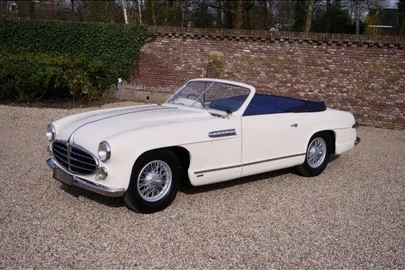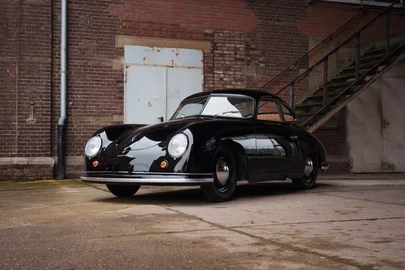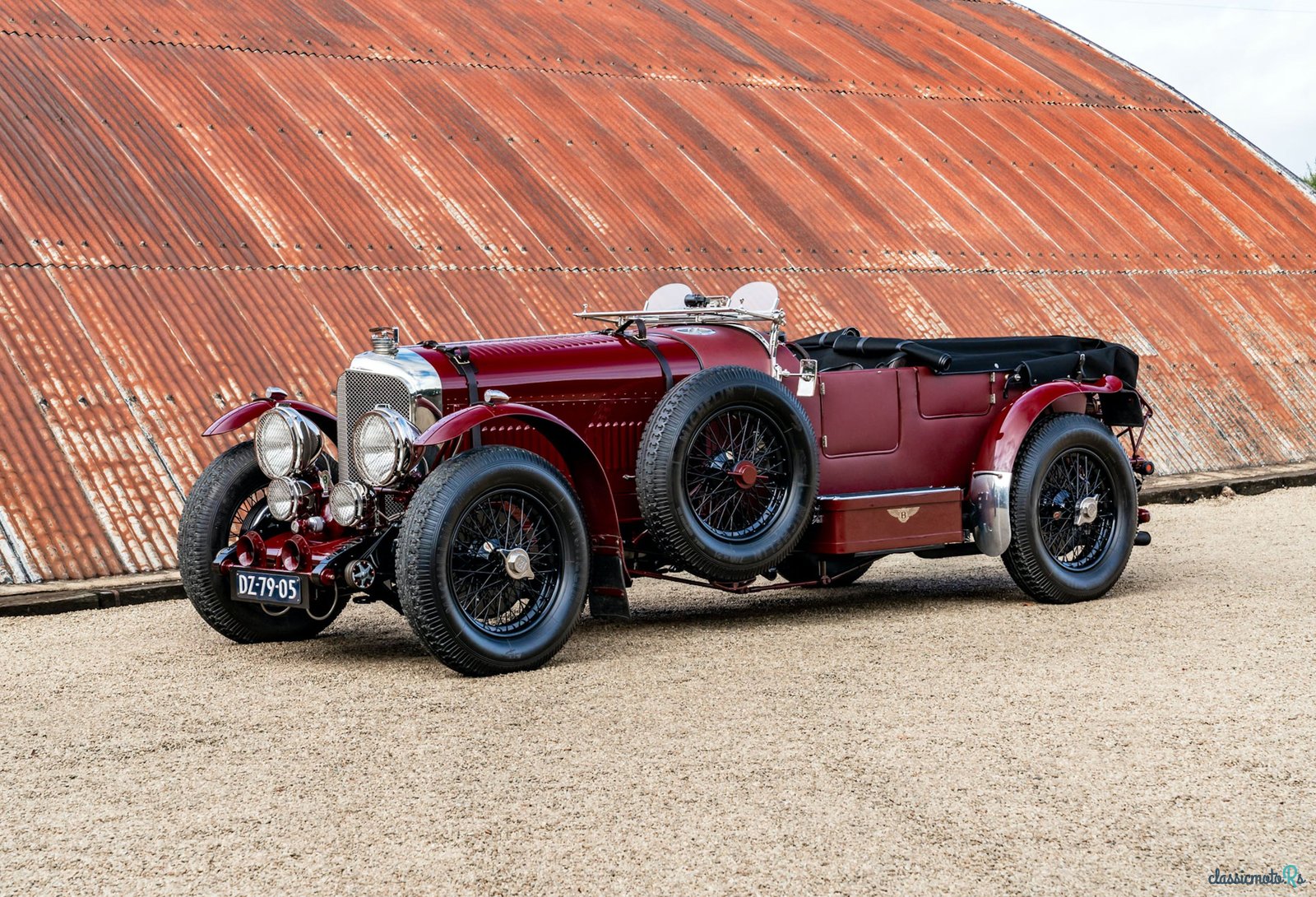
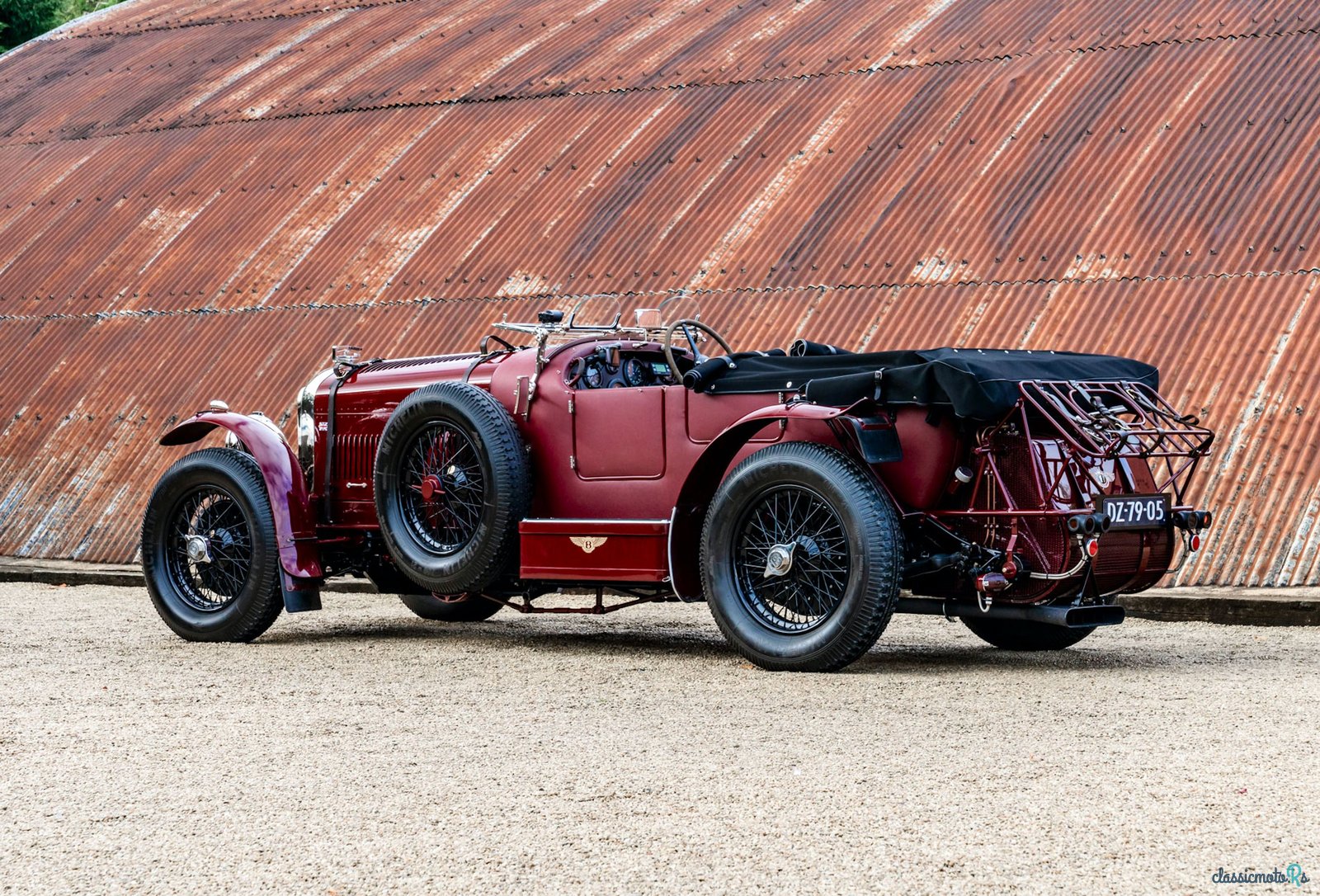
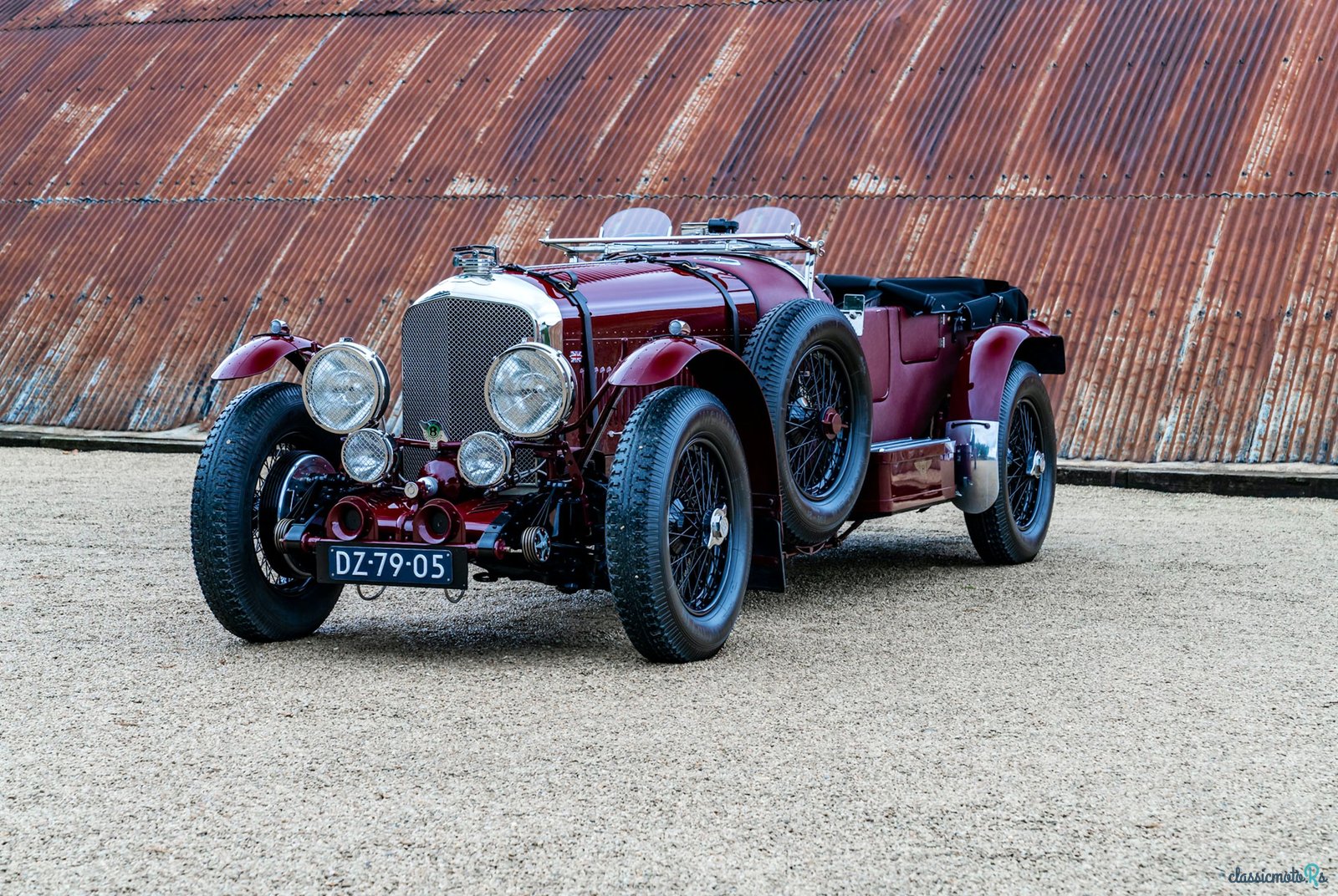
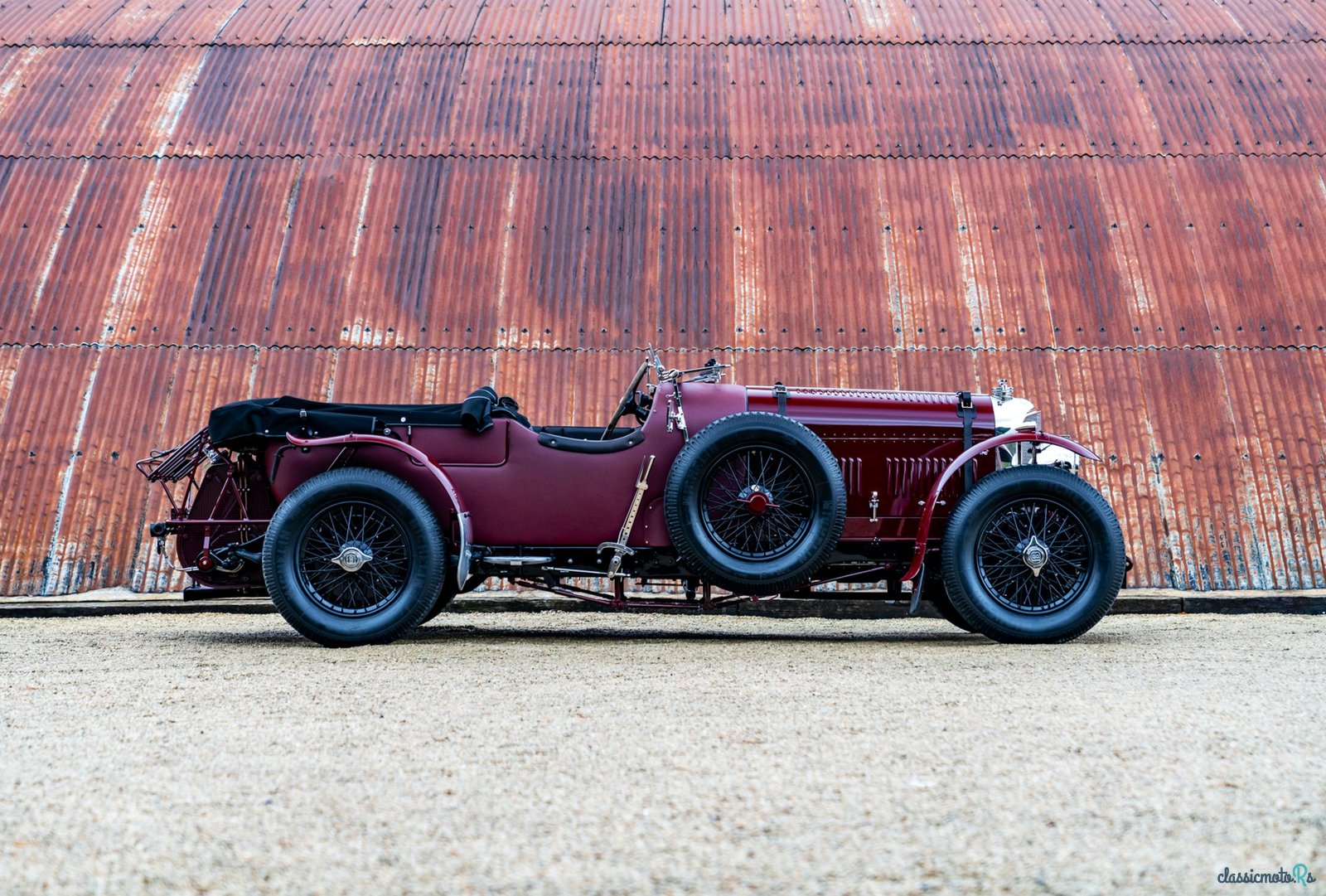
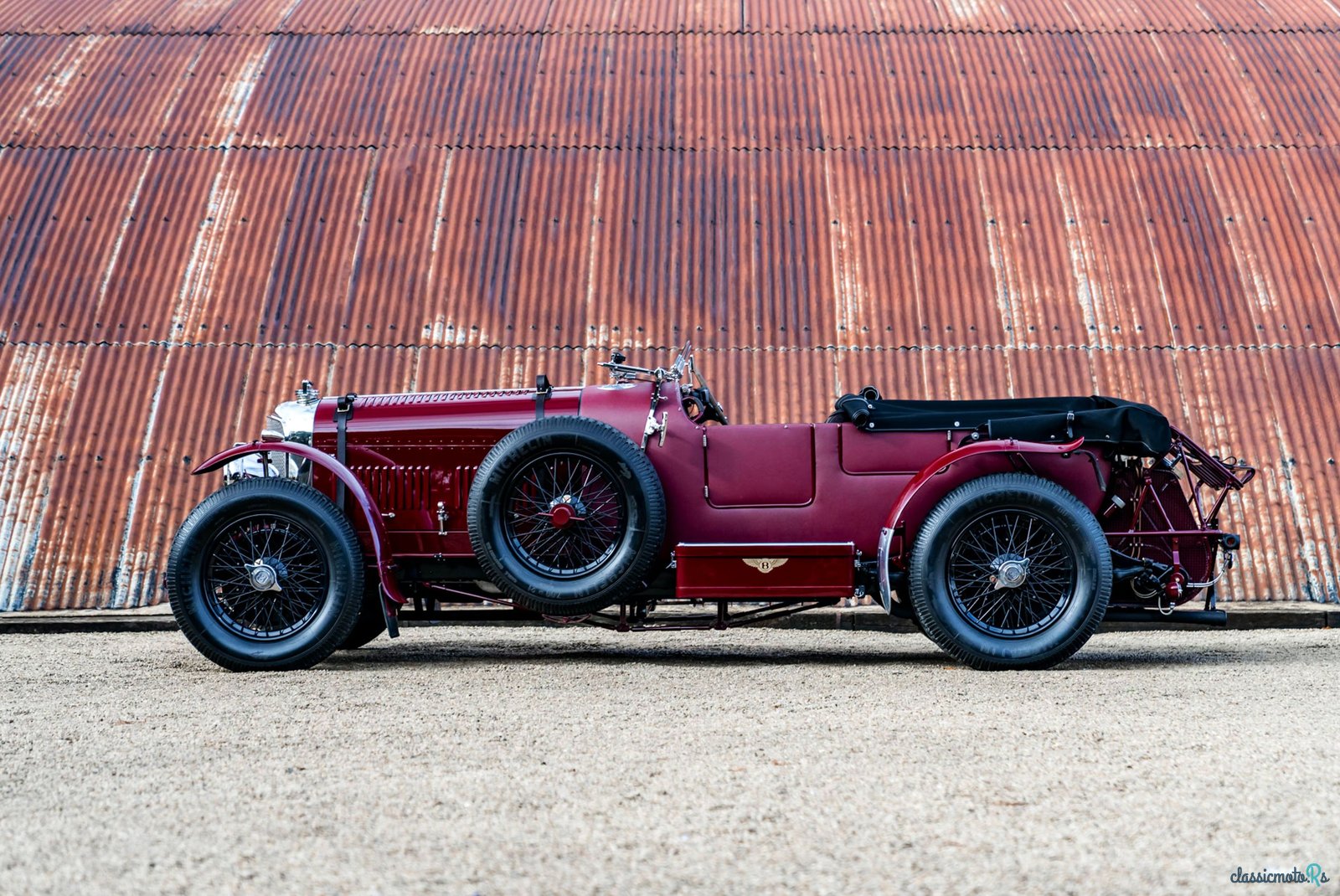
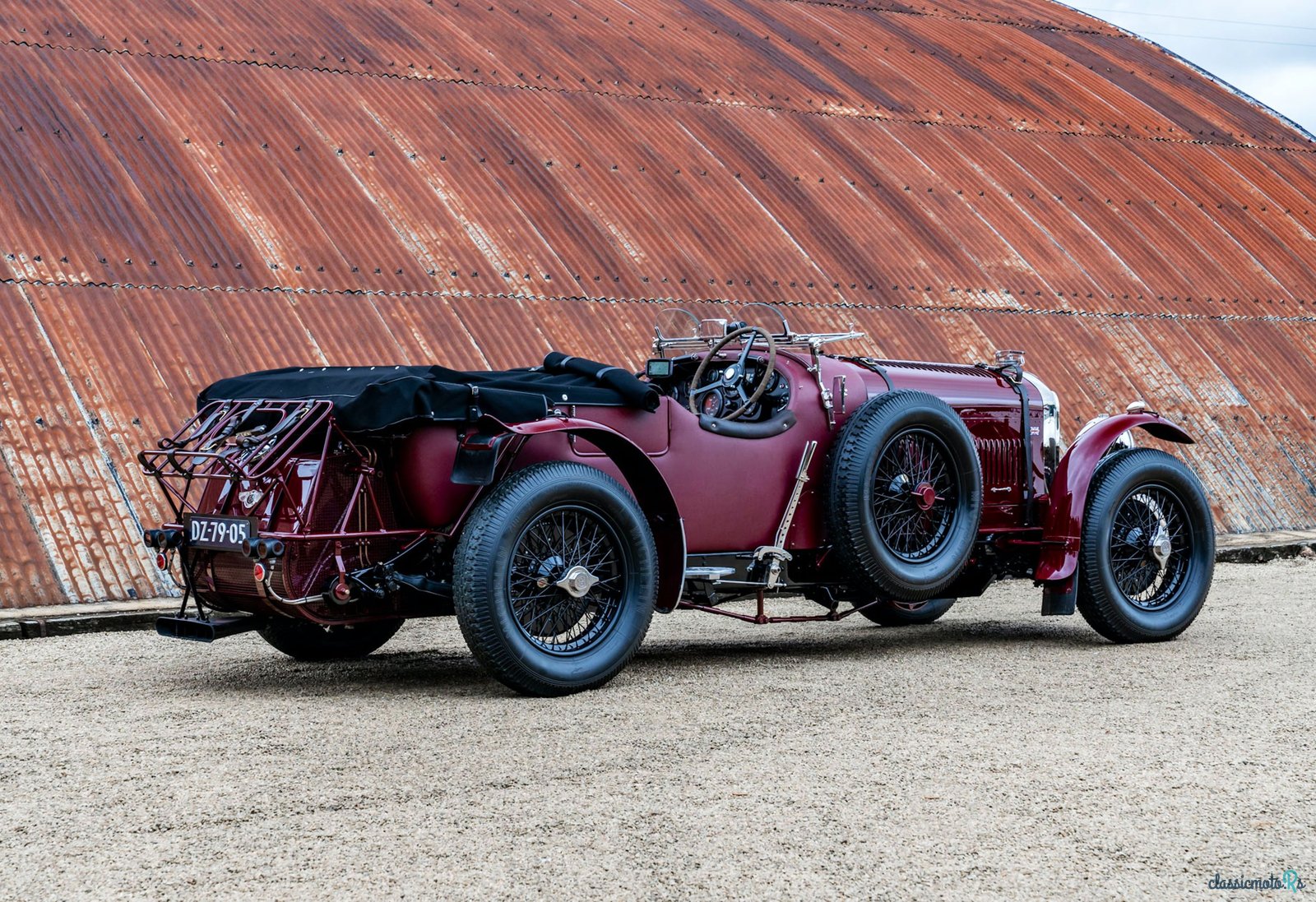
6 photos
1947' Bentley Speed 8 By Racing Green
Report This Ad!Rate This!Bookmark This
£350,000Published 4 February 2023ID: pJX9og
Expired
2 years, 10 months ago
2 years, 10 months ago
Information from the owner
Body: Sports Car
Age: 76 years
Exterior color: Green
Exterior: Tonneau Cover
Seller's comments about 1947' Bentley Speed 8 By Racing Green
Built by Racing Green Engineering on MkVI chassis
Peking to Paris spec, with significant upgrades for rallying
Eight-cylinder 5675cc engine
Bespoke aluminium and fabric tourer coachwork
Beautifully constructed by marque specialist Racing Green Engineering on the chassis of a 1947 Bentley MkVI, this Bentley Speed 8 special evokes the glory days of Bentley’s pre-war sporting success.
Chassis number B236 BH was originally built as a blue Sports Saloon with blue hide, and delivered on 4 September 1947 to a Mr Martin for the Fischer Bearings Co Ltd, which at that time was part of the British Timken Group. It’s thought to have passed to a Dr Grimes in Peterborough in 1950, then a Mrs Jack in Essex in 1959.
In recent years, the MkVI chassis was used by Racing Green Engineering to form the basis of a Speed 8 special. An ash frame was constructed for the aluminium and fabric body, which pays homage to the Speed Six tourers that were raced so successfully by the ‘Bentley Boys’ at Le Mans. A double duck retractable hood and full tonneau cover were specified, along with a folding windscreen fitted with laminated safety glass, while all of the brightwork was nickel-plated.
Beneath the long bonnet is the robust Rolls-Royce/ Bentley B80 straight-eight, which was part of the B-series family of engines that was produced in large quantities between 1945 and 1959. The 5675cc powerplant features overhead valves and a dry-sump lubrication system, and is fitted with a quartet of SU H6 carburettors. It drives through a four-speed Bentley gearbox with synchromesh on second, third and top, and a high-ratio crownwheel and pinion was specified.
The steering is via cam and roller, and the brakes are a combination of hydraulically operated front drums and mechanical rear drums. A servo has also been fitted.
The electrical system is negative earth, and an alternator takes care of the charging. The Lucas P100 headlamps feature halogen bulbs and there are not only additional long-range driving lamps, but also discreetly fitted indicators.
This car was specified by the owner as “Peking to Paris” specification to make it better suited to endurance rallying. The extensive list of uprated extras includes a dual fuel tank, under-body guards for improved protection, a hidden built-in air compressor, external battery box, strengthened chassis and a raised exhaust. Under-bonnet illumination provides lighting for over-night adjustments at the end of a day’s rally tests.
Inside, the leather-trimmed driver and passenger seats are both heated, and leather-bound carpets are used. The aluminium instrument panel, meanwhile, is packed with period-style instruments.
With its blend of pre-war style, post-war components and modern engineering, this Bentley Speed 8 is an incredibly usable, reliable and striking choice of classic tourer. Now offered for sale at The Classic Motor Hub in superb condition, it comes with a full specification sheet from Racing Green Engineering and the original MkVI build information from the Bentley factory.
MODEL HISTORY
The Racing Green Engineering Speed 8 encompasses various strands of Bentley history. The Cricklewood firm first introduced a six-cylinder model, the 6½ Litre, in 1926 and customers could choose from various chassis options.
Then, in 1928, Bentley introduced the Speed Six – a more sporting version of the 6½ Litre that would become one of its most celebrated cars. ‘Bentley Boy’ and company chairman Woolf Barnato famously raced the Blue Train through France in his Speed Six, while racing variants won the Le Mans 24 Hours in 1929 and 1930.
By the time the MkVI was introduced in 1946, Bentley was a very different company. The Le Mans successes were a distant memory and the company had long since been acquired by Rolls-Royce. Built in Crewe, the MkVI used a 4257cc straight-six and was fitted at the factory with an all-steel body – the days of rolling chassis being clothed in bodywork by various coachbuilders were gone.
Production lasted until 1952, when it was replaced by the R-type, and the MkVI has long been a popular choice for builders of Bentley specials.
The B-series engine, meanwhile, could trace its roots back to the late 1930s. It finally went into production in 1945 and was designed so that as many components as possible could be shared between its many variants. It was made in four-, six- and eight-cylinder form, and was used in everything from military vehicles to the Rolls-Royce Phantom IV. A highly modified version of the four-cylinder B40 block was even used by the Vanwall Grand Prix team as the basis for its Formula 1 engines.
Peking to Paris spec, with significant upgrades for rallying
Eight-cylinder 5675cc engine
Bespoke aluminium and fabric tourer coachwork
Beautifully constructed by marque specialist Racing Green Engineering on the chassis of a 1947 Bentley MkVI, this Bentley Speed 8 special evokes the glory days of Bentley’s pre-war sporting success.
Chassis number B236 BH was originally built as a blue Sports Saloon with blue hide, and delivered on 4 September 1947 to a Mr Martin for the Fischer Bearings Co Ltd, which at that time was part of the British Timken Group. It’s thought to have passed to a Dr Grimes in Peterborough in 1950, then a Mrs Jack in Essex in 1959.
In recent years, the MkVI chassis was used by Racing Green Engineering to form the basis of a Speed 8 special. An ash frame was constructed for the aluminium and fabric body, which pays homage to the Speed Six tourers that were raced so successfully by the ‘Bentley Boys’ at Le Mans. A double duck retractable hood and full tonneau cover were specified, along with a folding windscreen fitted with laminated safety glass, while all of the brightwork was nickel-plated.
Beneath the long bonnet is the robust Rolls-Royce/ Bentley B80 straight-eight, which was part of the B-series family of engines that was produced in large quantities between 1945 and 1959. The 5675cc powerplant features overhead valves and a dry-sump lubrication system, and is fitted with a quartet of SU H6 carburettors. It drives through a four-speed Bentley gearbox with synchromesh on second, third and top, and a high-ratio crownwheel and pinion was specified.
The steering is via cam and roller, and the brakes are a combination of hydraulically operated front drums and mechanical rear drums. A servo has also been fitted.
The electrical system is negative earth, and an alternator takes care of the charging. The Lucas P100 headlamps feature halogen bulbs and there are not only additional long-range driving lamps, but also discreetly fitted indicators.
This car was specified by the owner as “Peking to Paris” specification to make it better suited to endurance rallying. The extensive list of uprated extras includes a dual fuel tank, under-body guards for improved protection, a hidden built-in air compressor, external battery box, strengthened chassis and a raised exhaust. Under-bonnet illumination provides lighting for over-night adjustments at the end of a day’s rally tests.
Inside, the leather-trimmed driver and passenger seats are both heated, and leather-bound carpets are used. The aluminium instrument panel, meanwhile, is packed with period-style instruments.
With its blend of pre-war style, post-war components and modern engineering, this Bentley Speed 8 is an incredibly usable, reliable and striking choice of classic tourer. Now offered for sale at The Classic Motor Hub in superb condition, it comes with a full specification sheet from Racing Green Engineering and the original MkVI build information from the Bentley factory.
MODEL HISTORY
The Racing Green Engineering Speed 8 encompasses various strands of Bentley history. The Cricklewood firm first introduced a six-cylinder model, the 6½ Litre, in 1926 and customers could choose from various chassis options.
Then, in 1928, Bentley introduced the Speed Six – a more sporting version of the 6½ Litre that would become one of its most celebrated cars. ‘Bentley Boy’ and company chairman Woolf Barnato famously raced the Blue Train through France in his Speed Six, while racing variants won the Le Mans 24 Hours in 1929 and 1930.
By the time the MkVI was introduced in 1946, Bentley was a very different company. The Le Mans successes were a distant memory and the company had long since been acquired by Rolls-Royce. Built in Crewe, the MkVI used a 4257cc straight-six and was fitted at the factory with an all-steel body – the days of rolling chassis being clothed in bodywork by various coachbuilders were gone.
Production lasted until 1952, when it was replaced by the R-type, and the MkVI has long been a popular choice for builders of Bentley specials.
The B-series engine, meanwhile, could trace its roots back to the late 1930s. It finally went into production in 1945 and was designed so that as many components as possible could be shared between its many variants. It was made in four-, six- and eight-cylinder form, and was used in everything from military vehicles to the Rolls-Royce Phantom IV. A highly modified version of the four-cylinder B40 block was even used by the Vanwall Grand Prix team as the basis for its Formula 1 engines.

